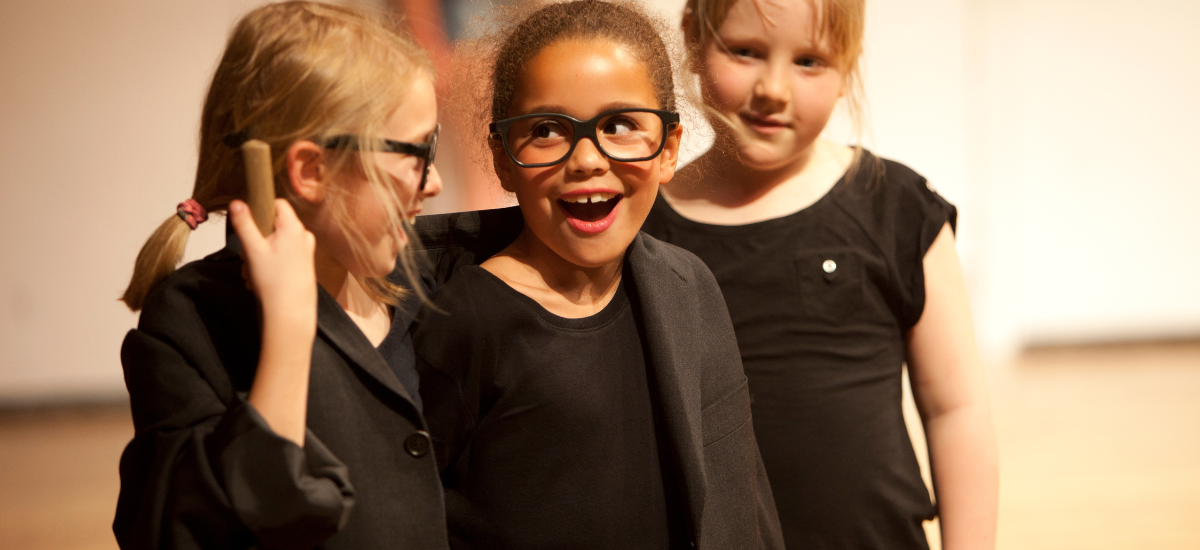Table of Contents
ToggleIntroduction
10 Creative Ways To Teach Literature In Classrooms Reading stories and evaluating texts is only one aspect of literature; other aspects include delving into the depths of human experience, comprehending nuanced characters, and valuing the diversity of language. But in a lot of schools, studying literature might occasionally feel dull or unrelated to the students’ daily life.
Conventional approaches to teaching literature frequently emphasize formal debates, linear analysis, and rote memorization. Although these approaches have their uses, they don’t necessarily pique kids’ interest in literature or foster a lifelong love of it.
Teachers need to come up with innovative strategies to engage kids, pique their curiosity, and make literary texts come to life in today’s tech-driven, fast-paced society. In addition to improving understanding, this strengthens students’ emotional and intellectual bonds with the subject matter.
Students are more likely to view literature as a dynamic, developing field with something to offer them personally when they are encouraged to actively engage with texts in creative and engaging ways.
1. Literature-Based Role Play and Drama
One of the most powerful ways to bring literature to life is through role play and drama. Students often connect more deeply with a text when they physically inhabit the roles of characters, re-enacting key scenes or improvising dialogues. This creative approach encourages empathy and offers new perspectives on the text that are hard to achieve through mere analysis.
For example, in a classroom studying Shakespeare’s Macbeth, students can act out the pivotal scene where Macbeth wrestles with his conscience before committing murder. This exercise helps them understand the psychological conflict at play while also engaging with Shakespearean language in a more personal, interactive way.
Read more
Role-playing can also encourage students to explore alternative plotlines, imagining what would happen if a character made a different decision. This sort of creative exercise not only deepens literary analysis but also helps students develop their public speaking and presentation skills. Drama-based teaching invites students to become active participants rather than passive recipients of knowledge.

2. Book Clubs and Group Discussions
Literature often speaks to different readers in unique ways, and book clubs offer a fantastic opportunity for students to explore these differing perspectives. By forming small groups where students read the same novel or play, they can discuss the themes, characters, and messages in a more informal and peer-driven setting.
Book clubs promote critical thinking and social interaction, as students listen to others’ interpretations, share their thoughts, and build upon each other’s ideas. Teachers can guide these discussions with open-ended questions that encourage students to delve deeper into the text. For example, in studying To Kill a Mockingbird, questions like, “How do the characters’ experiences with racism differ, and how does this impact their personal growth?” can spark thoughtful conversations about societal issues that resonate today.
In addition, students can take turns leading the discussions, which not only builds their leadership skills but also makes them more responsible for their learning. By the end of the activity, students will have developed a broader understanding of the text and a deeper appreciation for different viewpoints.
3. Integrating Multimedia and Technology
Incorporating multimedia into literature instruction can make the text feel more immediate and relevant. Whether it’s through film adaptations, podcasts, or online discussion forums, technology offers diverse ways to engage with literature.
For example, showing clips from a movie adaptation of a novel can spark a conversation about the differences between the medium of film and the literary source material. Students can compare the director’s interpretation with their own understanding of the text. This encourages a multi-modal approach to analysis and helps students understand the creative choices involved in translating literature into film.
Interactive websites like Padlet or Google Classroom can be used for collaborative activities, where students post their thoughts on different aspects of the book. These platforms encourage students to articulate their ideas and engage in ongoing dialogue with their peers, even outside of class.
Additionally, incorporating podcasts, online author interviews, or digital storytelling platforms can bring new voices and interpretations into the classroom. Podcasts featuring literary experts or student-created content allow for a more personalized and varied learning experience. Students can also use apps like VoiceThread to create their own multimedia responses to the texts they’re studying.
4. Thematic Units and Cross-Disciplinary Connections
Instead of teaching literature in isolation, teachers can build thematic units that connect literature with history, philosophy, art, and even current events. This holistic approach shows students how literature is not just an isolated subject but part of a larger web of human experience.
For instance, if teaching a novel like 1984 by George Orwell, teachers can pair the book with lessons on totalitarian regimes, media manipulation, or government surveillance. Students could analyze the book through the lens of political philosophy, history, or even modern-day issues related to privacy and government control. These cross-disciplinary connections not only deepen understanding but also help students see the relevance of literature to their own lives.
Similarly, a unit on the American Dream could include novels like The Great Gatsby alongside non-fiction articles, films, or poetry that address themes of ambition, success, and societal expectations. By exploring these themes across different media, students gain a richer and more nuanced understanding of the literature.
5. Creative Writing and Parody
One of the most effective ways to help students engage with a text is by encouraging them to write creatively. After reading a novel or play, students can be tasked with writing an alternative ending, creating a letter from one character to another, or even writing a modern-day version of the story.
For example, after studying Pride and Prejudice, students could write a series of social media posts from the perspective of Elizabeth Bennet or Mr. Darcy, exploring how their personalities and social dynamics might change in the digital age. This exercise helps students explore the text in a fresh, fun way, all while practicing their writing and analytical skills.
Parody writing, too, allows students to engage humorously with literature. By creating their own parodies of famous literary scenes or characters, students can explore the conventions of genres, tone, and character development. Parody-writing also helps students appreciate the importance of voice and perspective in literature.
6. Literature-Based Visual Arts Projects
Literature can also be expressed through visual arts. Students can create posters, drawings, or even digital art projects based on the text they’re studying. This kind of project encourages students to engage with the material in a way that appeals to their creativity and artistic expression.
For instance, after reading a novel like The Catcher in the Rye, students could create a visual collage that represents the protagonist’s inner turmoil or a symbolic interpretation of the novel’s themes. Students can also use digital tools like Canva or Adobe Spark to create multimedia posters that combine text, images, and sound.
These artistic projects can serve as entry points for discussion, as students explain their creative choices and link them back to the themes and characters in the literature. Visual arts projects promote deeper, multi-dimensional thinking and encourage students to think outside the box.
7. Literary Field Trips and Author Visits
Taking literature outside the classroom and into the real world is an immersive way to engage students. Field trips to museums, theaters, or historical sites can provide students with tangible connections to the texts they are studying. For example, a trip to a local museum or art gallery could complement a study of The Picture of Dorian Gray by Oscar Wilde, allowing students to explore visual representations of beauty, art, and identity in a real-world context.
Additionally, inviting authors or literary experts for classroom visits, either in person or via video conference, can offer students the rare opportunity to interact with creators and gain insights into the writing process. Students can ask authors about their inspiration, themes, and how their work connects to global issues.
These field trips and visits help students move beyond the confines of the classroom and see literature in a broader context, making it feel more alive and relevant.
8. Literature Circles and Peer Teaching
Literature circles are small, student-driven reading groups where each member takes on a specific role (e.g., summarizer, questioner, vocabulary finder, etc.) and the group works together to analyze a text. This collaborative approach empowers students to take ownership of their learning while developing critical thinking and communication skills.
Peer teaching is another powerful method, where students take turns leading discussions or teaching lessons about specific parts of the book. By teaching others, students reinforce their own understanding and gain confidence in their ability to explain complex concepts.
These methods emphasize collaboration and encourage students to take an active role in the classroom, reinforcing the idea that learning is a shared responsibility rather than a passive activity.
9. Connecting Literature to Current Events and Social Issues
One of the most effective ways to make literature come alive for students is to connect it to current events or ongoing social issues. Literature provides a mirror to society, and by examining the way books engage with topics such as inequality, social justice, identity, and environmental challenges, students can see how literature mirrors their world.
Read more
For instance, teaching The Hunger Games alongside discussions on topics like class division, political power, and media manipulation can help students see how these themes are not confined to fiction. This approach makes the literature feel more relevant and applicable to their own experiences.
In this way, literature becomes a tool for examining the world, not just a reflection of it.
10. Gamifying Literature Lessons
Finally, gamification—turning learning into a fun, competitive activity—can be a powerful tool in the literature classroom. Teachers can create quizzes, challenges, or role-playing games that involve students acting out scenes, solving literary puzzles, or competing in team-based activities that test their knowledge of the text.
For example, a trivia contest based on the novel being studied can challenge students to recall specific details and themes in an engaging and dynamic way. Or, a scavenger hunt could encourage students to search for symbols, quotes, and literary devices within the text, fostering a deeper understanding of its elements.

Conclusion
Teaching literature doesn’t have to be limited to strict or conventional ways. Through the integration of technology, collaborative learning strategies, and creative, hands-on activities, instructors may encourage students to engage literature with enthusiasm, curiosity, and critical thinking. There are countless opportunities for creativity in the classroom; the strategies described in this article are only the start.
Students who actively engage with texts—whether through creative writing, multimedia, theater, or real-world connections—develop a lifelong appreciation for the power of storytelling in addition to greater analytical abilities. Teachers may inspire a new generation of readers, thinkers, and writers by demonstrating to them that literature is a real, breathing discourse rather than merely a subject to be studied.
Read more
FAQ
1. How can I make classic literature more engaging for my students?
One of the best ways to engage students with classic literature is by making connections between the themes and issues in the book and their own lives. Use creative methods like role play, multimedia, and group discussions to bring the text to life. For example, when teaching The Great Gatsby, you can compare its themes of ambition and social mobility to current issues like the pursuit of wealth in modern society.
2. What if my students have different learning styles?
Creative teaching methods, such as group work, role-playing, and visual arts projects, offer multiple entry points for students with different learning preferences. For visual learners, art projects and multimedia can be effective, while auditory learners might benefit from group discussions or listening to podcasts. Offering a variety of activities ensures all students have the chance to engage with the material in ways that resonate with them.
3. How can technology be integrated into literature lessons?
Technology can enhance literature instruction in a variety of ways. You can use multimedia tools like videos, podcasts, or interactive websites to supplement traditional readings. Digital tools like Google Classroom or Padlet can facilitate online discussions, while multimedia platforms like Prezi can be used for creating interactive literary presentations. Technology can also help students explore alternative interpretations of texts through film adaptations or author interviews available online.
4. How do I encourage deeper thinking and analysis in literature discussions?
Encourage open-ended questions that promote critical thinking. Questions like “What motivates the character’s actions?” or “How does the setting influence the plot?” push students to go beyond surface-level analysis. Additionally, fostering an environment of respect where students are encouraged to share and build on each other’s ideas can lead to richer, more insightful discussions.
5. Can creative writing really help students understand literature better?
Yes! Creative writing allows students to step into the shoes of the characters and think about the narrative from different perspectives. Writing alternative endings, letters, or modern adaptations of classic stories encourages deeper engagement with the text, helps develop empathy for the characters, and fosters a deeper understanding of the themes and literary techniques used in the work.
















